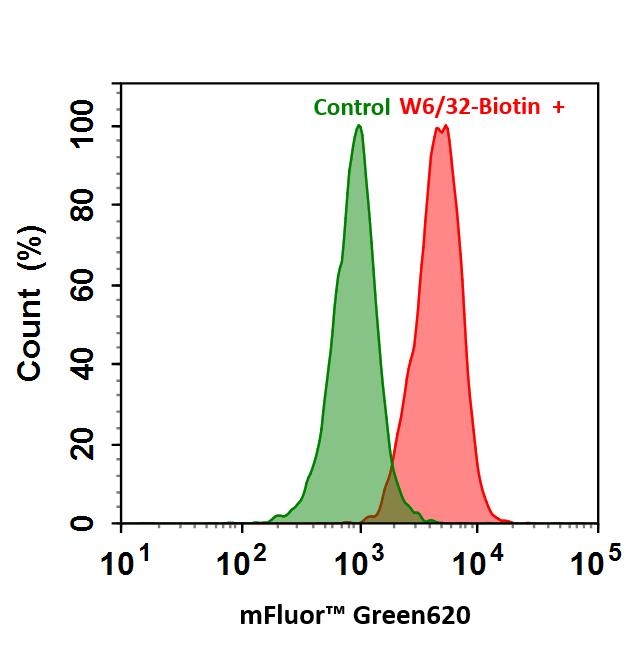mFluor™ Green 620 SE
mFluor™ Green 620 dye is a unique dye that is well excited by the green laser at 532 nm to give red fluorescence. mFluor™ Green 620 dye is water-soluble, and the protein conjugates prepared with mFluor™ Green 620 dye are bright with a Stokes Shift of ~80 nm. mFluor™ Green 620 dye and conjugates are excellent green laser reagents for both flow cytometry research and fluorescence imaging applications.


| Catalog | Size | Price | Quantity |
|---|---|---|---|
| 1165 | 1 mg | Price |
Physical properties
| Molecular weight | 883.98 |
| Solvent | DMSO |
Spectral properties
| Absorbance (nm) | 525 |
| Correction factor (260 nm) | 0.895 |
| Correction factor (280 nm) | 0.569 |
| Extinction coefficient (cm -1 M -1) | 50000 1 |
| Excitation (nm) | 525 |
| Emission (nm) | 623 |
Storage, safety and handling
| H-phrase | H303, H313, H333 |
| Hazard symbol | XN |
| Intended use | Research Use Only (RUO) |
| R-phrase | R20, R21, R22 |
| Storage | Freeze (< -15 °C); Minimize light exposure |
| UNSPSC | 12171501 |
Contact us
| Telephone | |
| Fax | |
| sales@aatbio.com | |
| International | See distributors |
| Bulk request | Inquire |
| Custom size | Inquire |
| Technical Support | Contact us |
| Request quotation | Request |
| Purchase order | Send to sales@aatbio.com |
| Shipping | Standard overnight for United States, inquire for international |
Page updated on December 11, 2025

